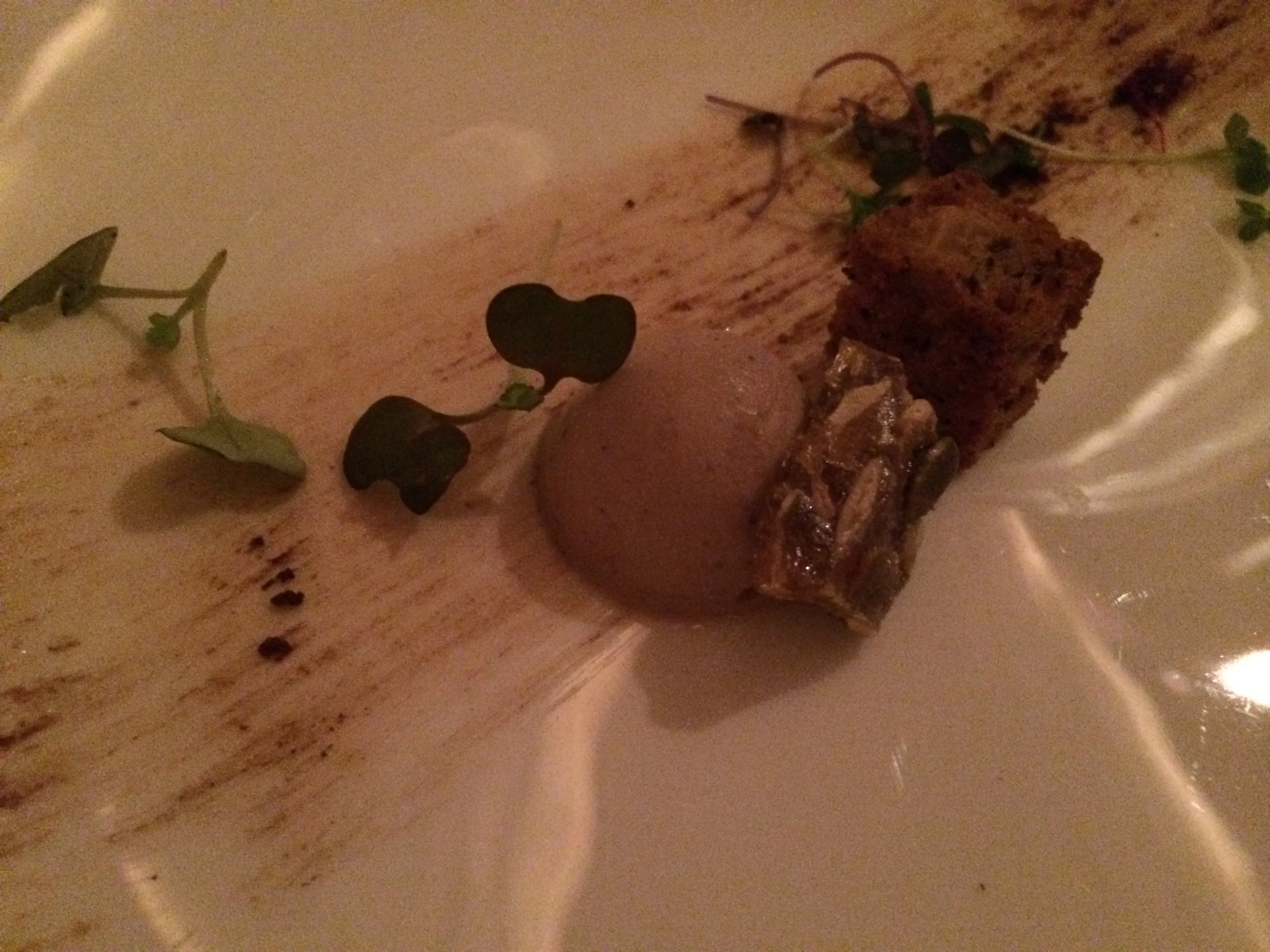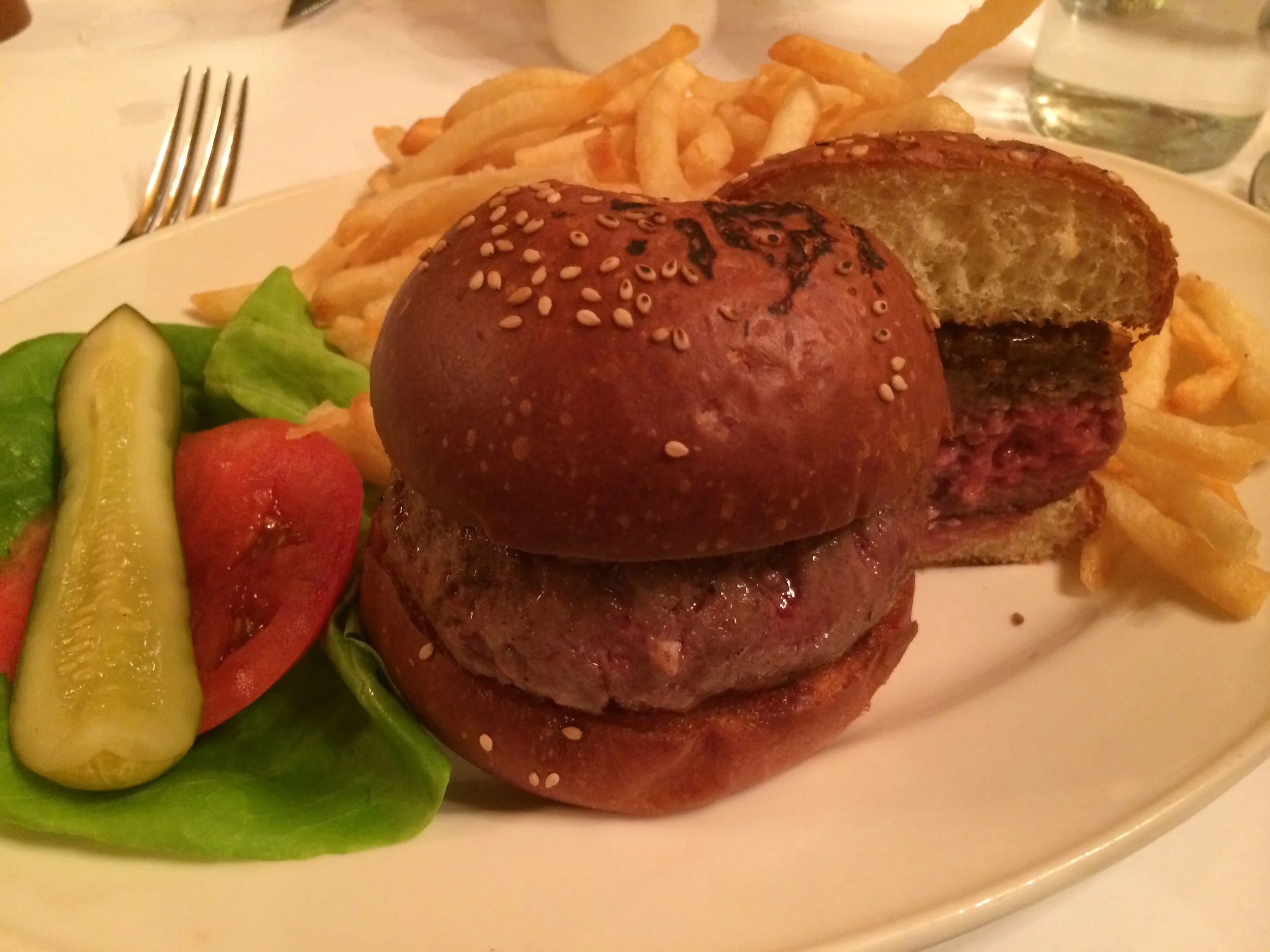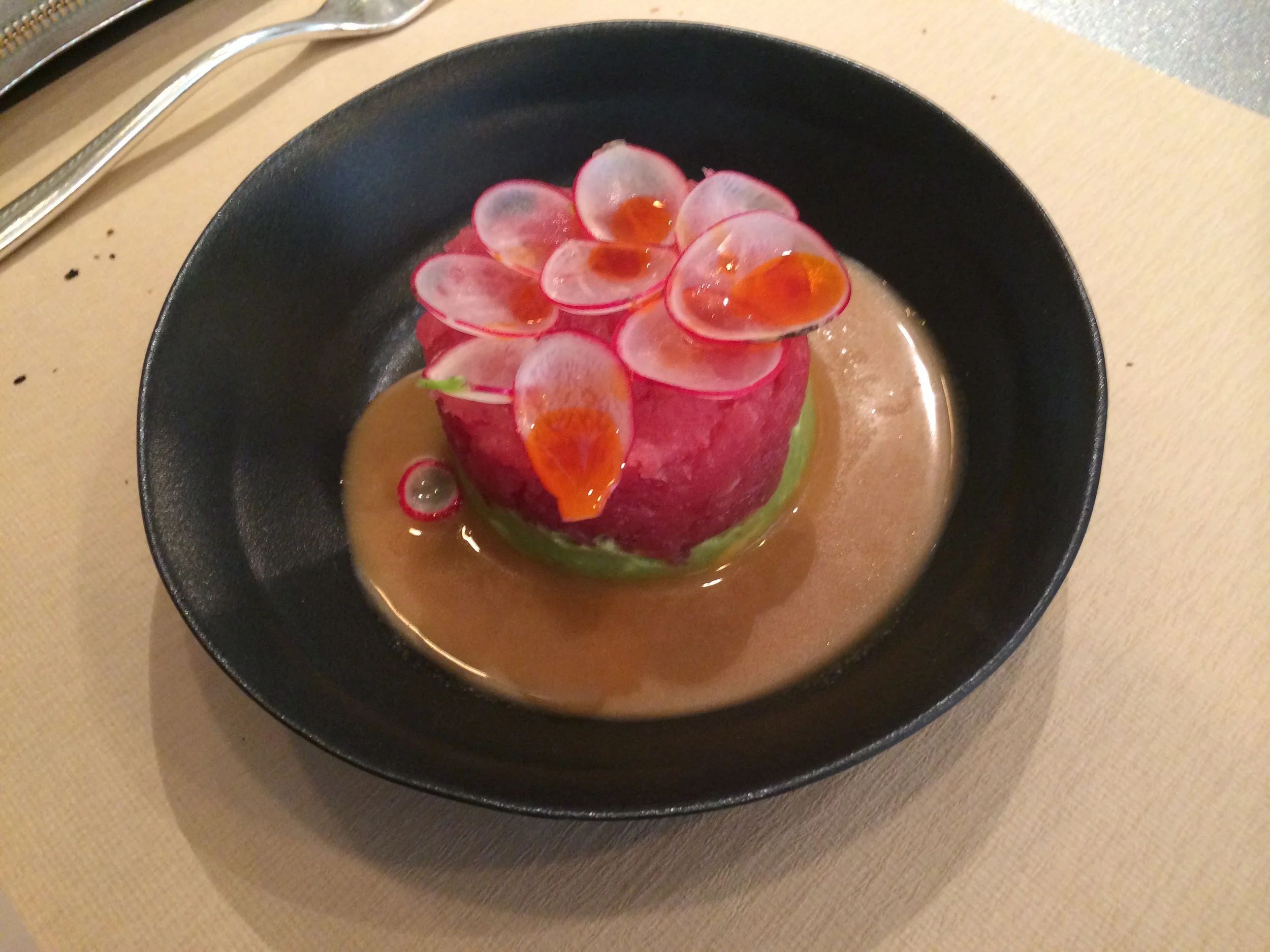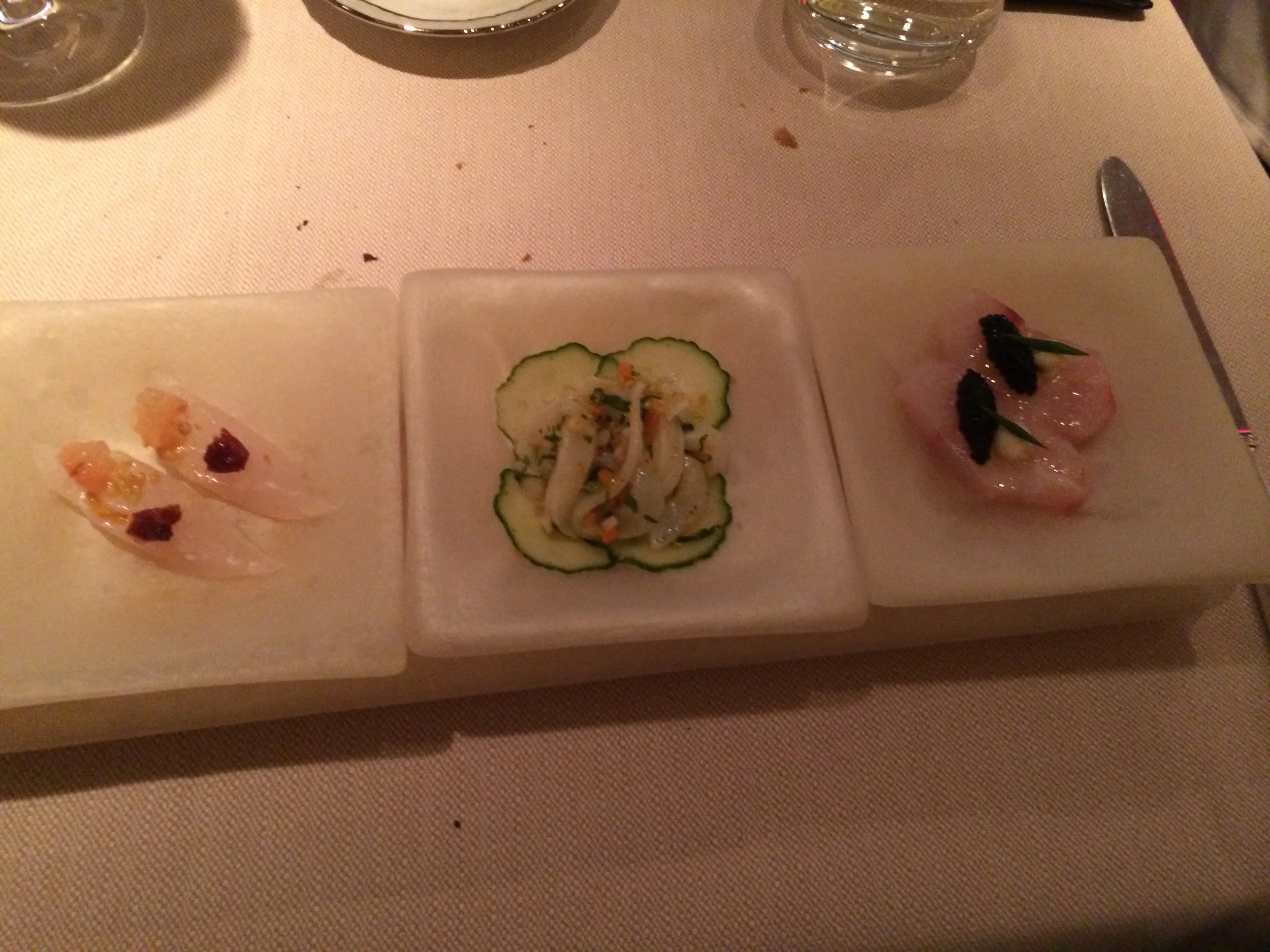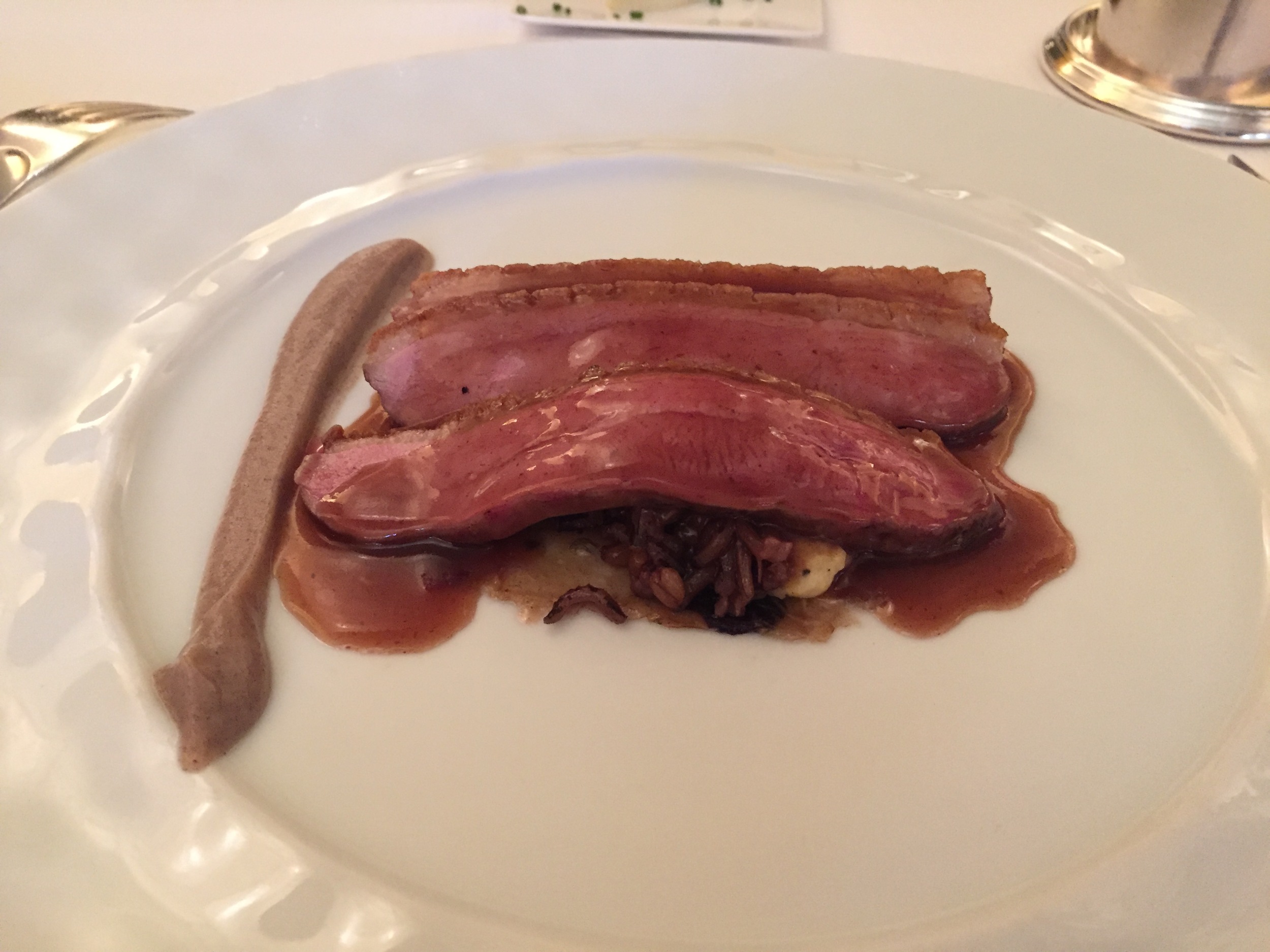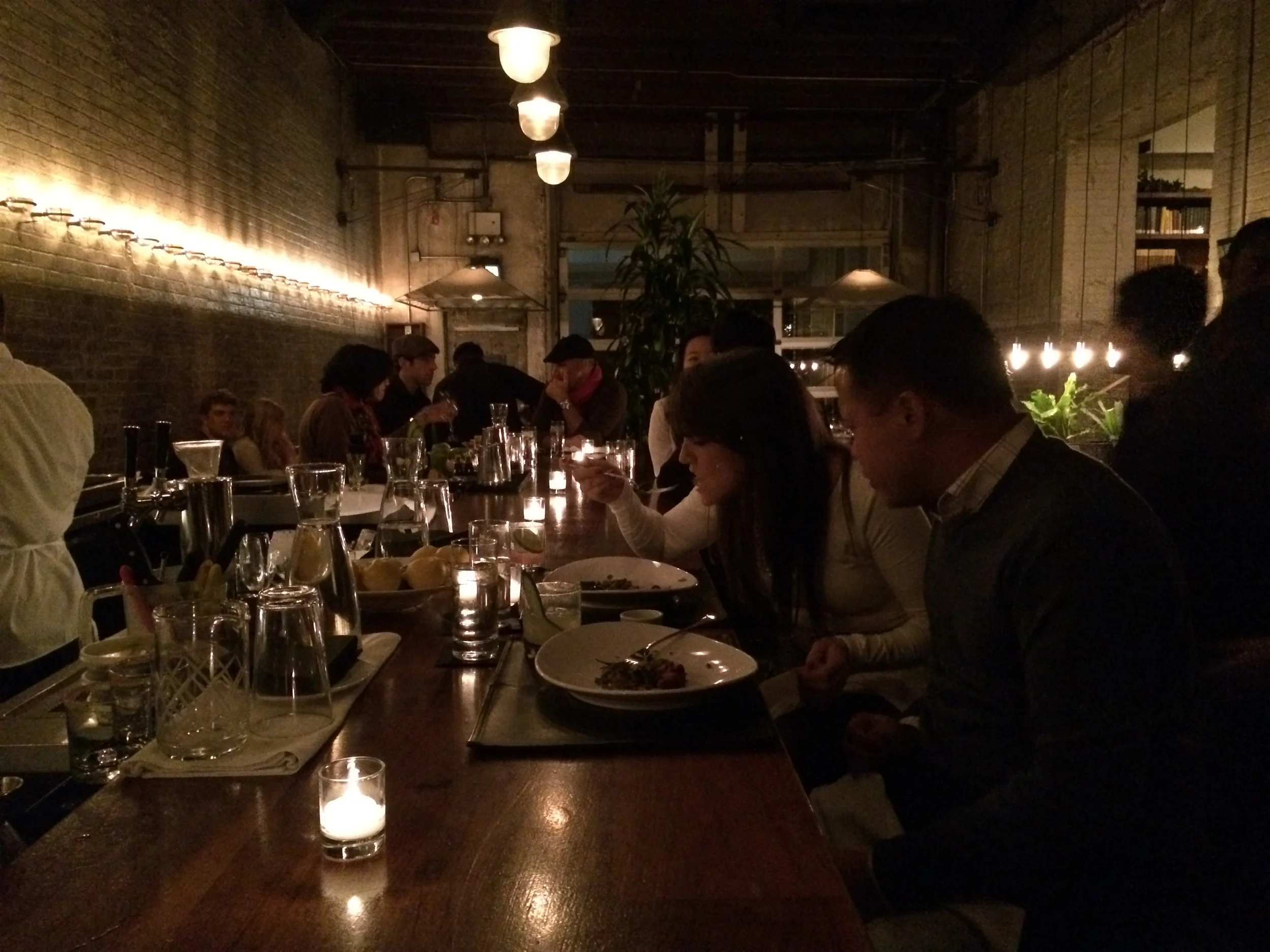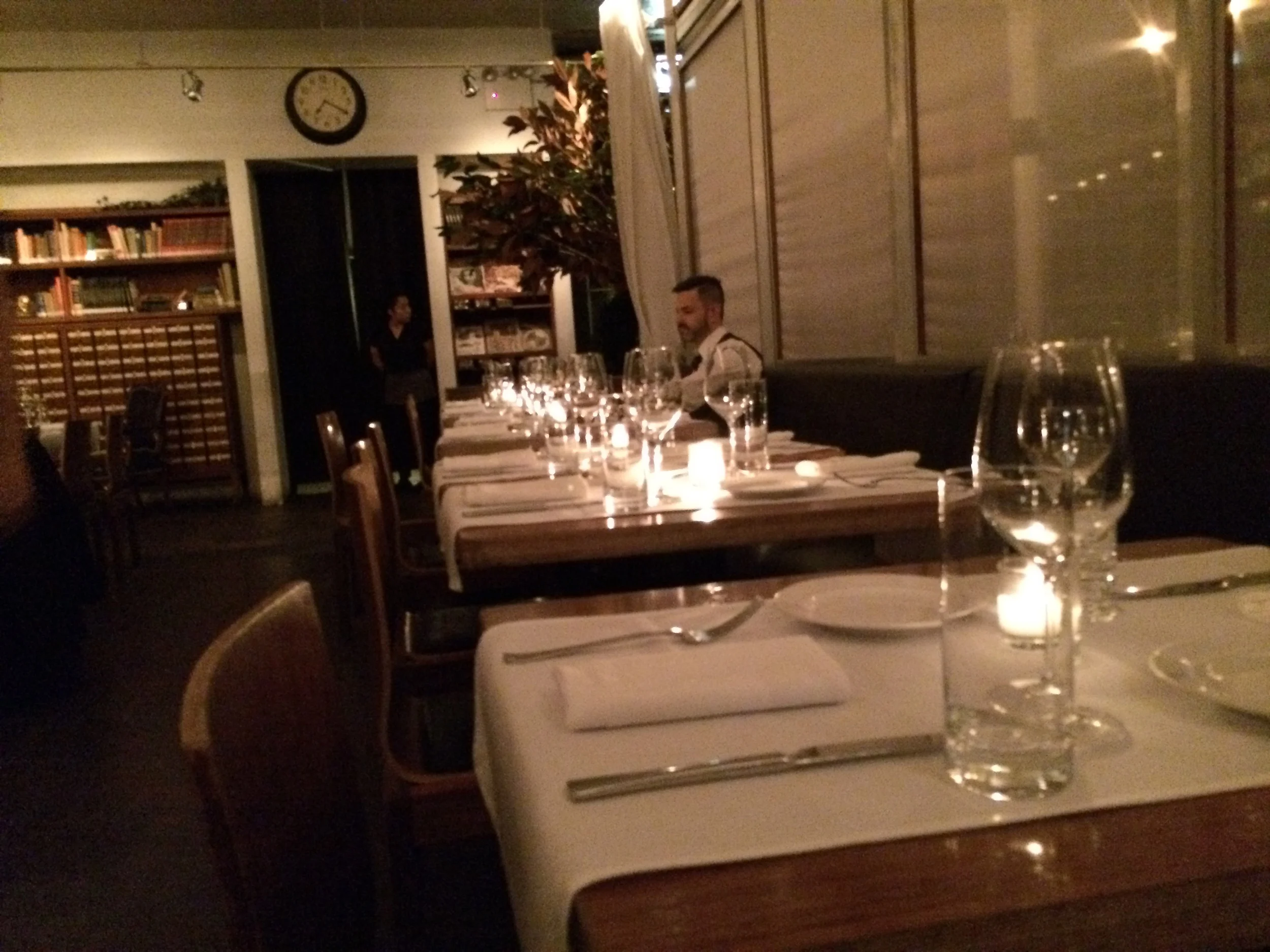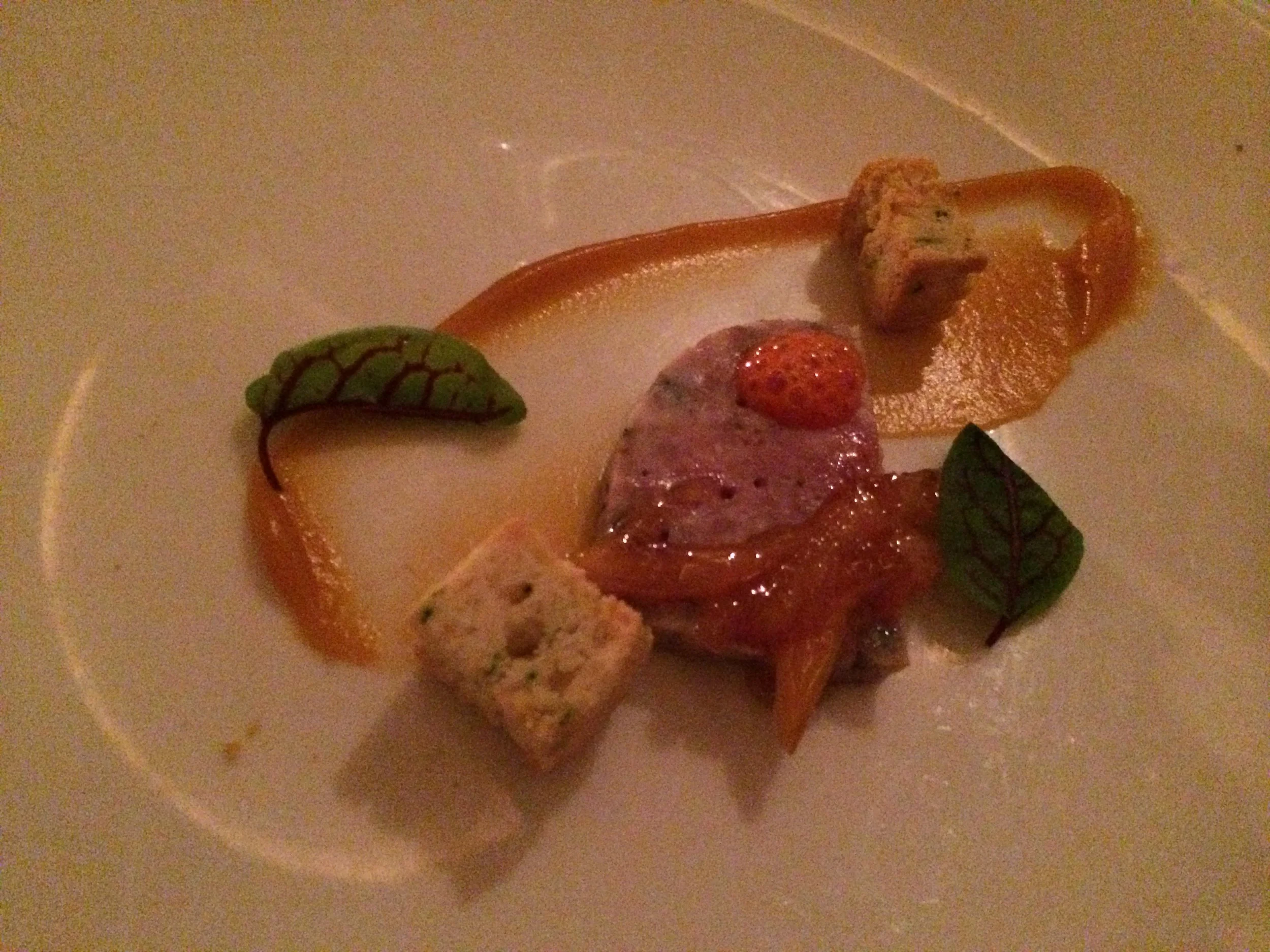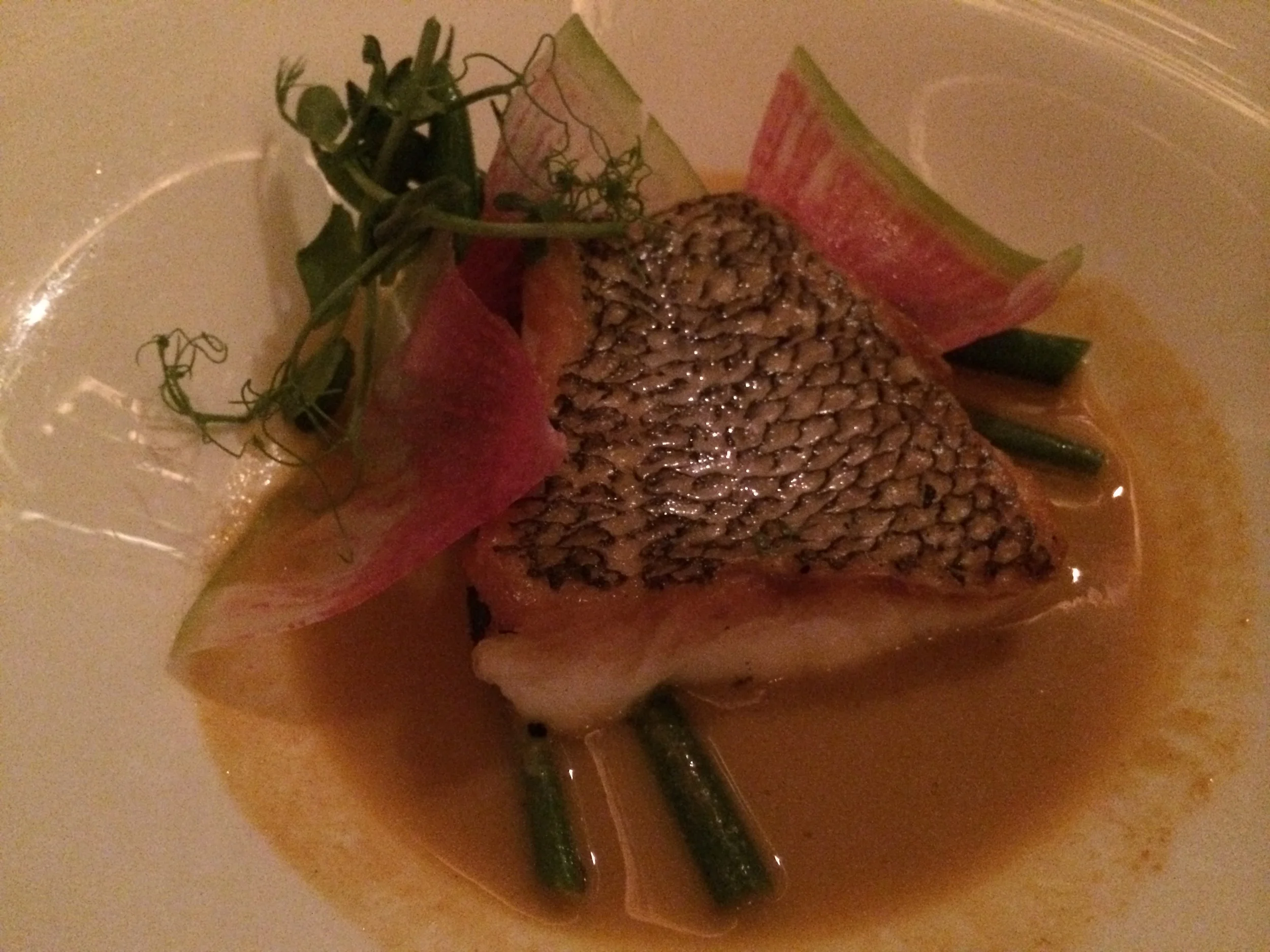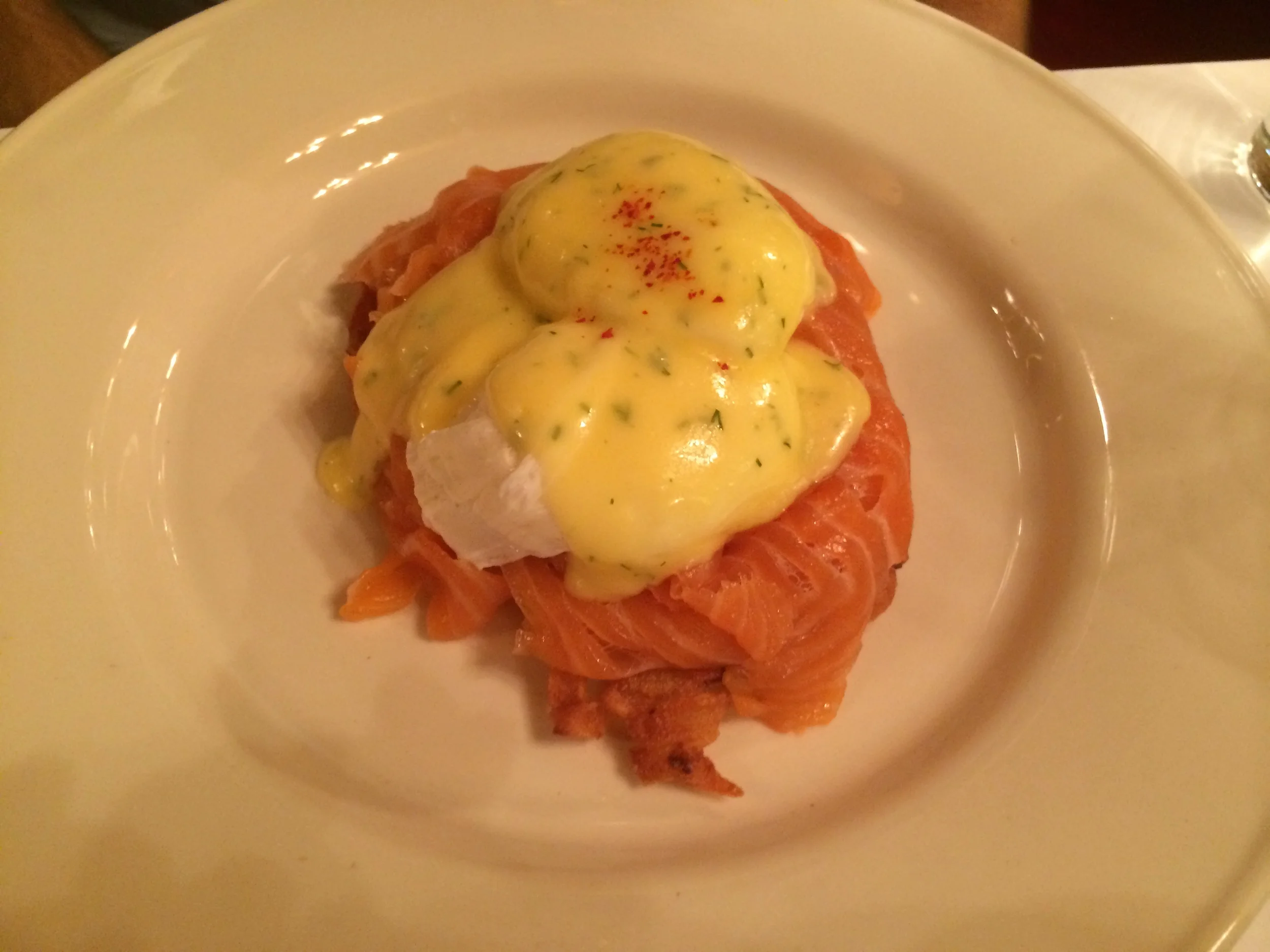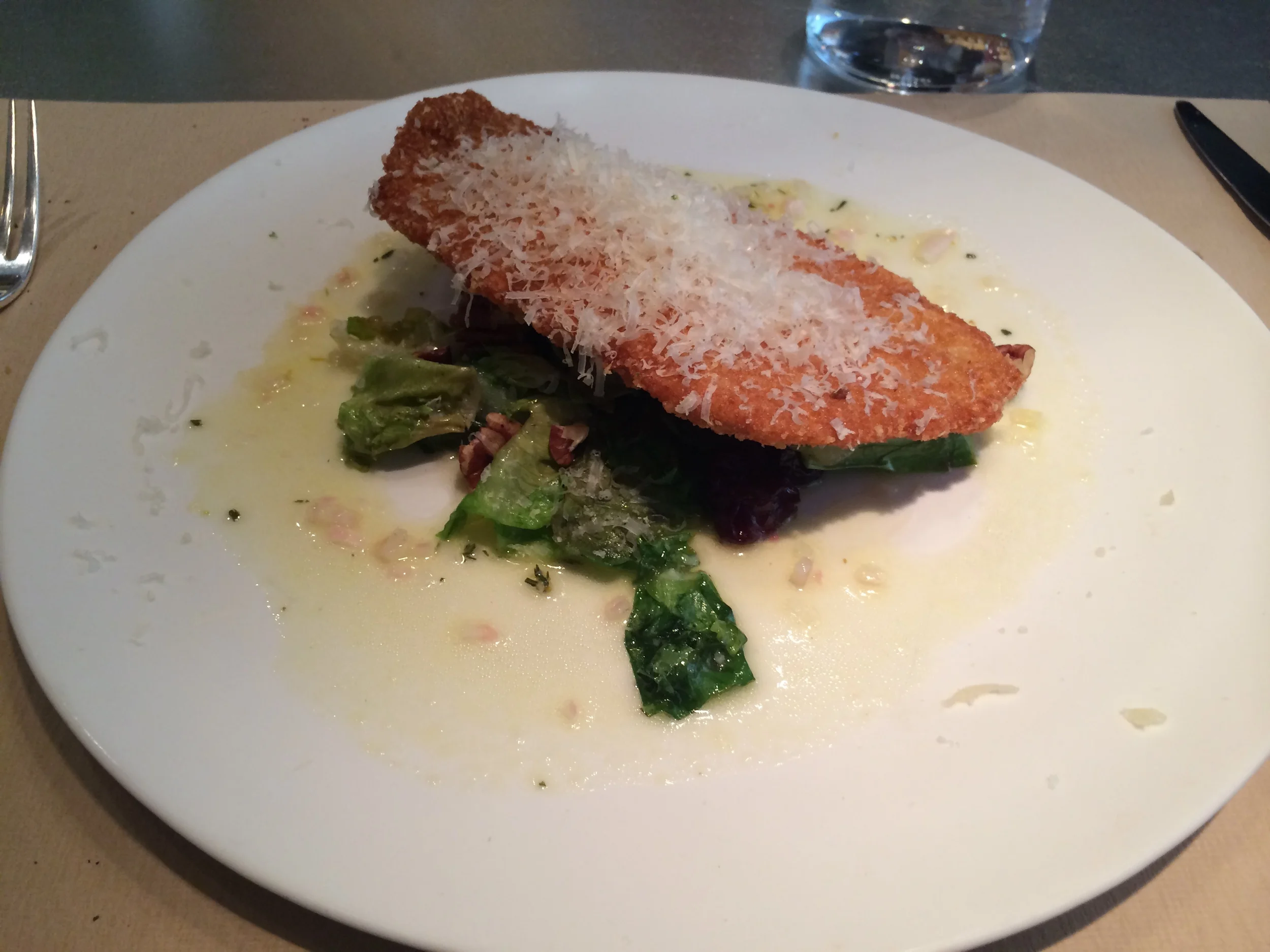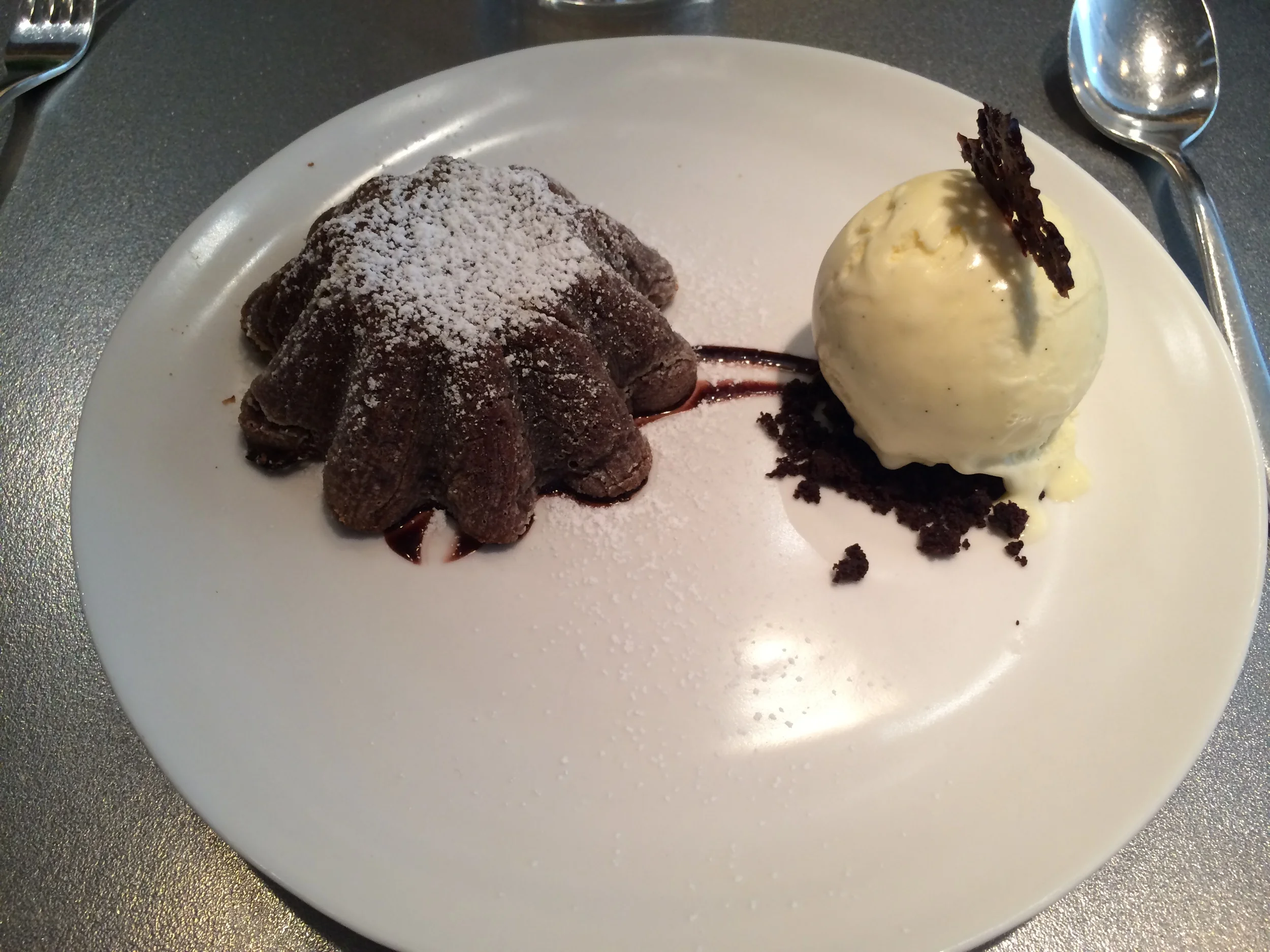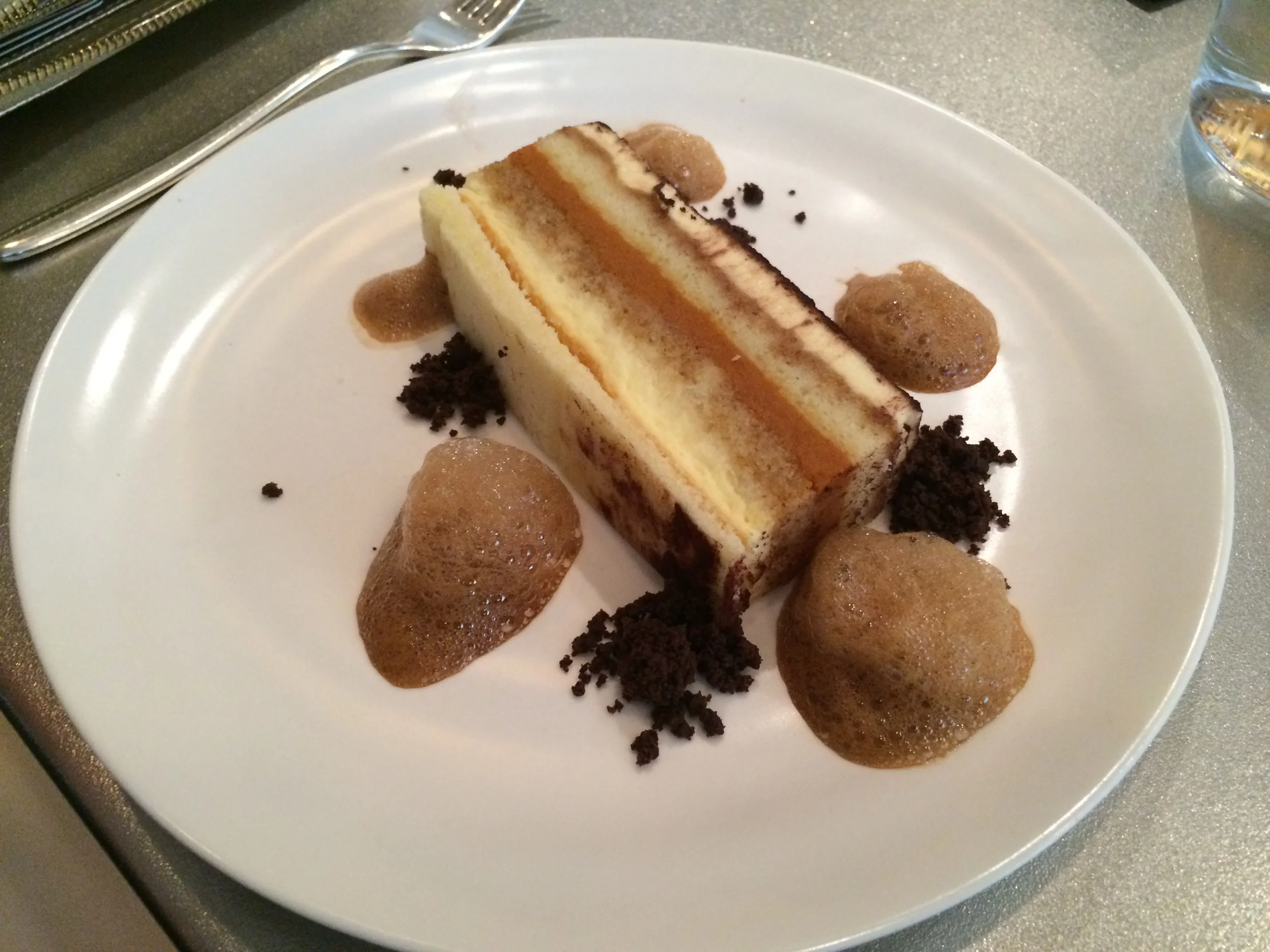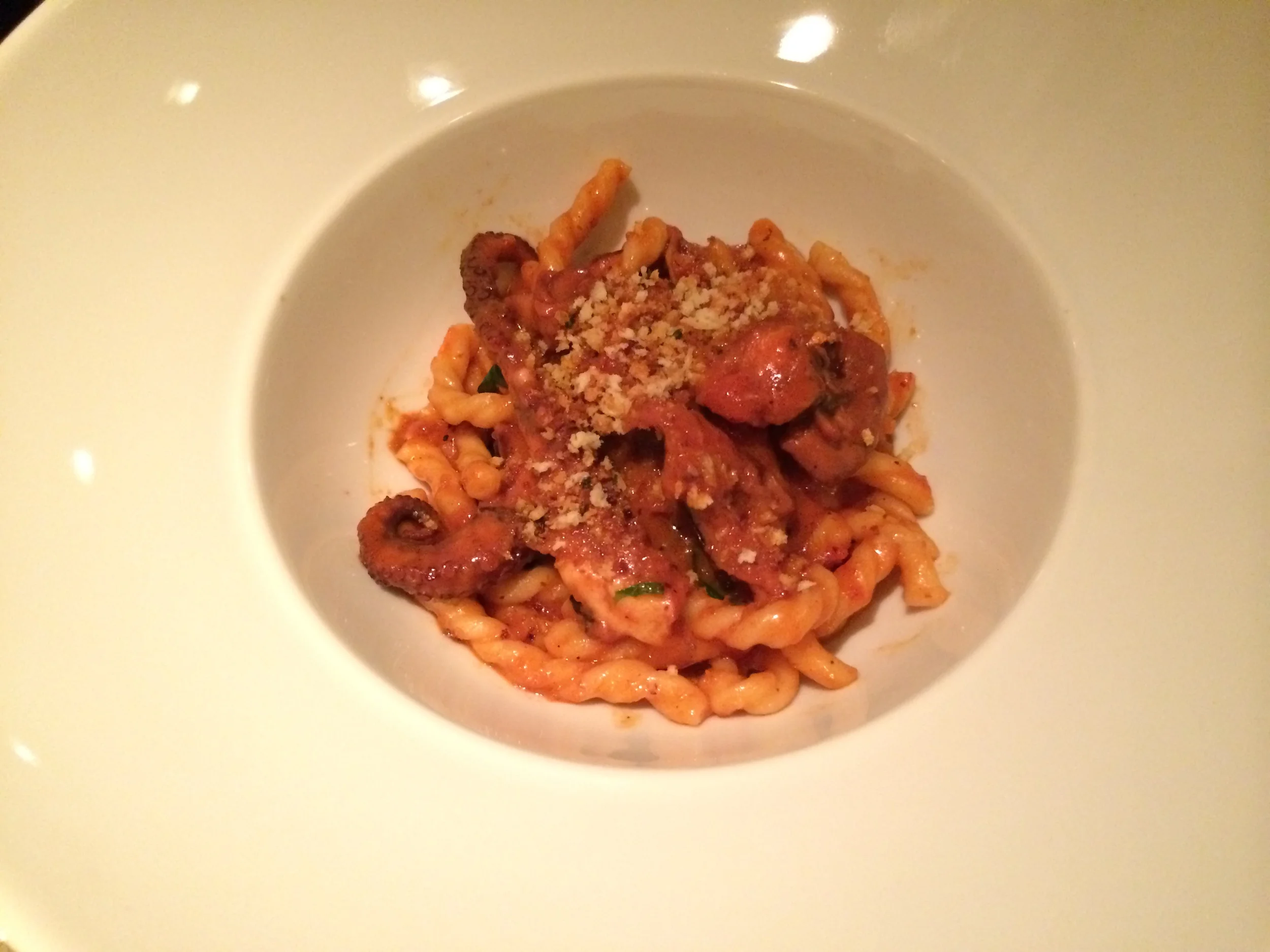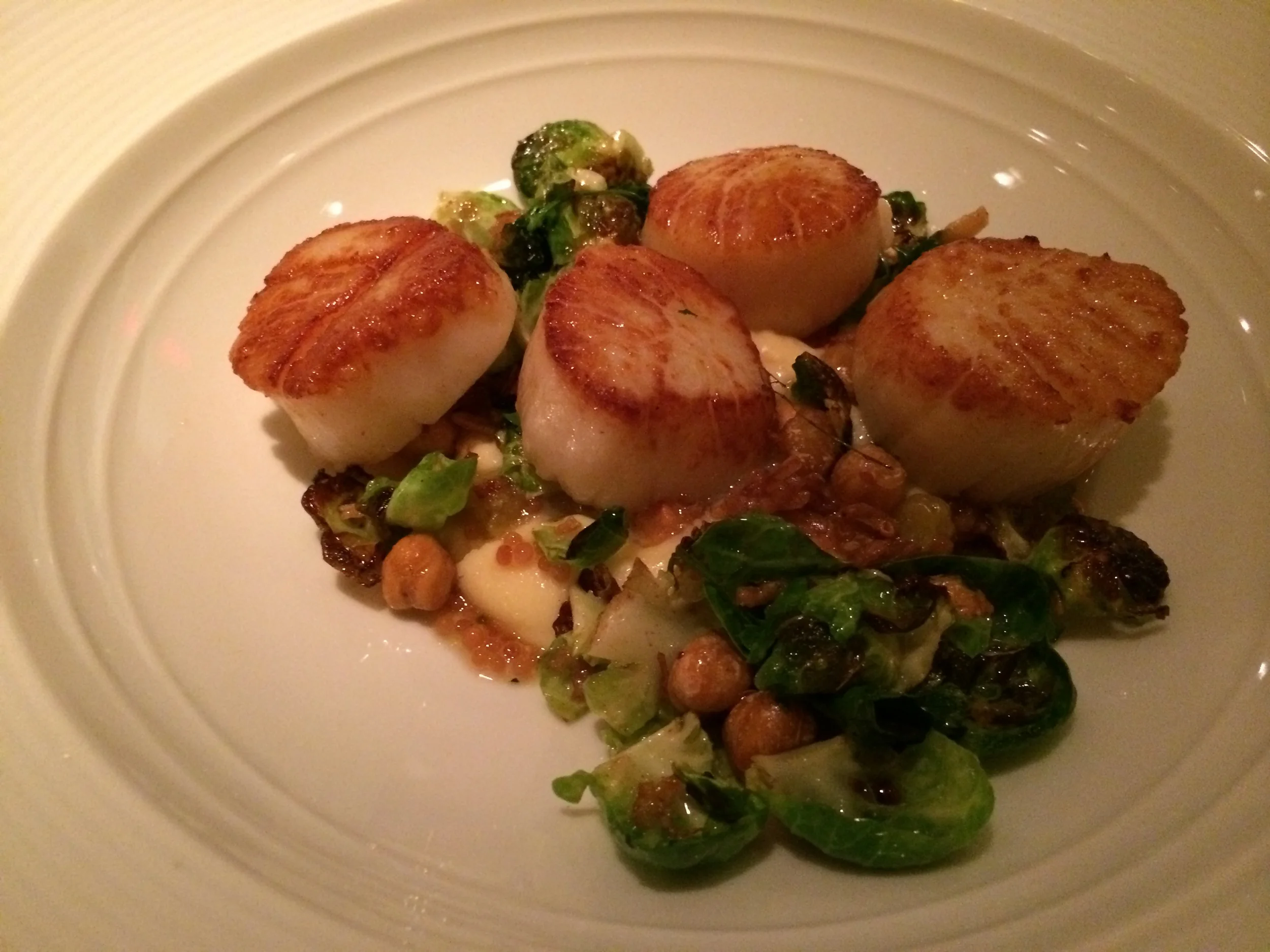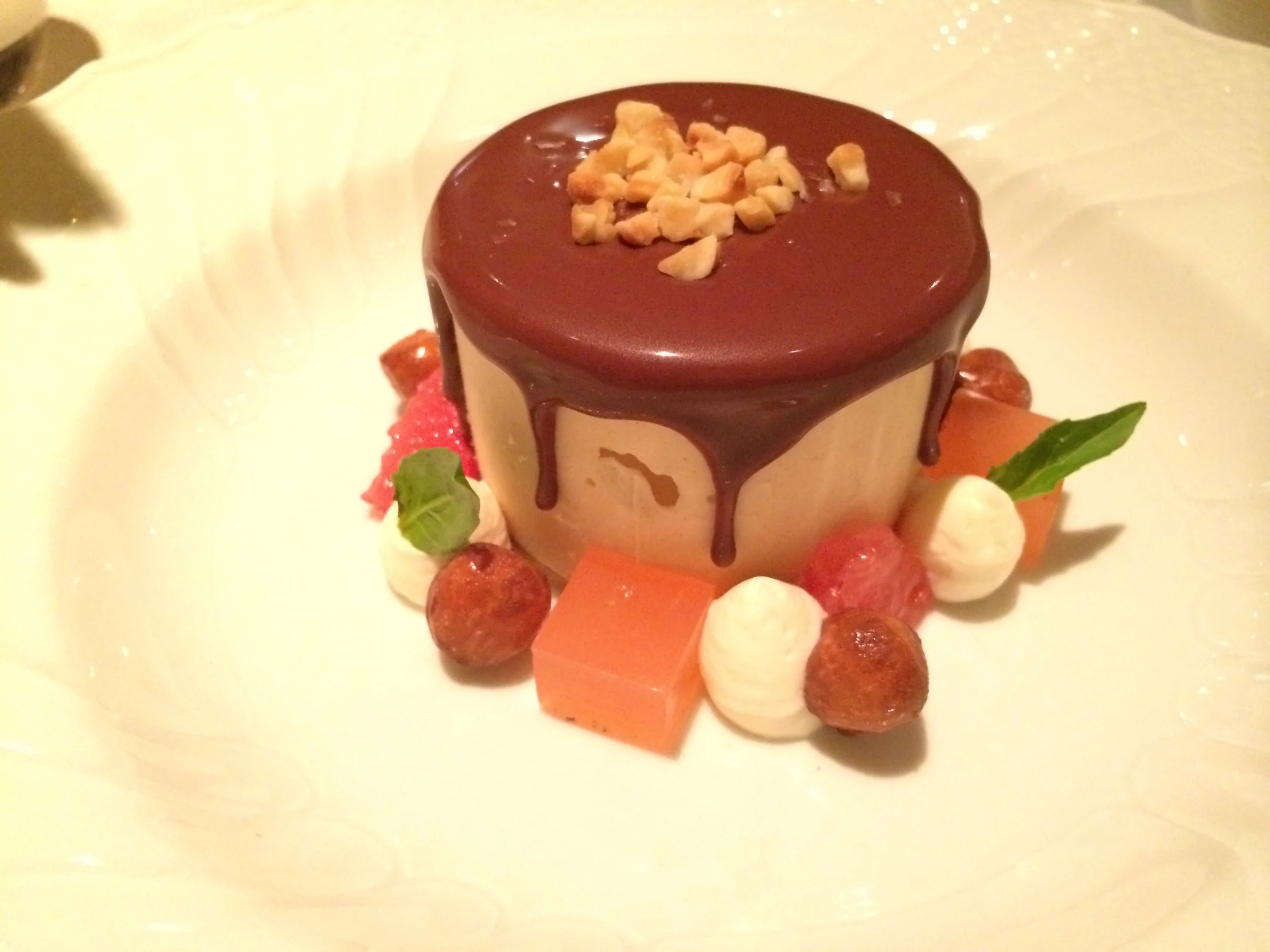This is the restaurant that catapulted David Chang on his stratospheric rise in foodie universe. I would know, since I have been to all three of his mediocre establishments in Toronto. One of them charges 50% more for a worse ramen, another one is fit only for large party dining, and the final one feels like a hostage situation where the ransom is $150 (Canadian dollars, I guess, which sounds like a deal… but isn’t). One of the great proponents of Shoto thought we should give Chang another shot. Chang's foodie views have often been questionable. He recommended this Korean place in Long Island city. They served mushy oysters from Korea, instead of fresh oysters from Maine. That was a disaster. So it would have been completely reasonable to expect nothing out of this two-star restaurant that has communal seating and obviously no tablecloths.
Begin with four amuses – they are each very good. Move to consommé, except it’s jellied and mixed with a tartare of Madai (red snapper – you’ve had it at every sushi restaurant). There’s a rustic quality but still definitively fine dining. The first spectacular dish is the sea urchin, itself rich and oily. It is paired with David Chang’s private brand of miso paste, but it is not made with soy but with chickpeas. The result is a lighter, sweeter, less salty paste that pairs perfectly with the urchin. It also seems to foreshadow many of the dishes to follow. Pairing is nothing new for restauranteurs but Chang has an intense mythology to it. He often puts two contrasting ingredients side by side in a tao-symbol formation. Once a dry aged steak tartare with a purée of sunchoke that picks up on the earthiness of the beef. Then caviar with its light, bursting qualities to offset a buttery potato purée.
Ko seems to derive inspiration from Japanese Kaiseki and so a sushi dish is appropriate. Chang’s is inspired - a torched mackerel sushi, in the “oshizushi style,” meaning pressed in a box. The accompanying fish broth is the consommé you were expecting a few courses back. The next spectacular dish is the pasta course. The main attraction is “pici”, a thick, glutinous pasta that is halfway to gnocchi territory, smothered in a concentrated Hozon (like the urchin dish) and topped with shaved white truffle.
The pasta manages to be al-dente yet decadent, and thick. The venison does not disappoint, as Shoto did with its meat dish. Ko’s is alluring in raspberry pink , drizzled with “olive berry” sauce and accompanied by a spoonful of Kale purée, which looks like a basil leaf if unfocused. This dish is a lesson in simplicity and elegance.
Now, to the dish that put Ko on the map. It is frozen foie gras grated over lychee and jelly. There are few things as mouthwatering as watching a brick of frozen geese liver turn into snowflakes and settle gently on what could be symbolic of a pond in the winter (as we know, consommé can be solidified). One foie gras connoisseur was not a fan but this commentator also liked Shoto. The dish crosses the line between sweet and savoury, creating a segue into dessert. The best one is pistachio and apricot, a return to the Tao motif. The skill here is to seal as much flavour into these ingredients, and it is done spectacularly. Bonus points for a green ice cream that isn’t green tea flavoured at a Japanese inspired restaurant.
The final compliment to give this restaurant is for its well curated and affordable wine list.
Domaine André et Mireille Tissot, Creғmant du Jura, ‘Indigène’ NV $65
J.B. Becker, Wallufer ‘Walkenberg,’ Kabinett Trocken 2008 $59 (which is now sadly off the list)
Robert Groffier, Bourgogne 2006 $75 ($75 for a 06 Burgundy?)
Momofuku Ko is clearly the best restaurant in New York City (thus far), and probably the United States. It raises the question of why the Toronto branch is so mediocre. And why is it only 69th in the world, outranked by Nomad, Eleven Madison Park, and Per Se (which I haven’t been to but is presumably similar to The French Laundry). It is rare that a restaurant can attain such celebrity status and maintained it. Arguably, it’s even grown.
Vegetable roll, pommes soufflées, Lobster paloise, millefeuille
Madai – consommé, shiso, fingerlime
Uni – chickpea, hozon
Sawarazushi – wasasbi, ginger
Razor clam – apple, basil
Dry aged beef – sunchoke, Juniper
Siberian sturgeon caviar – potato
Sourdough bread & radish butter
Halibut – cauliflower, Hungarian pepper
Pici – sunflower hozon, white truffle
Venison – kale, olive berry
Foie gras – lychee, pine nut, Riesling jelly
Carrot cardamom – meringue
Pistachio – apricot




















